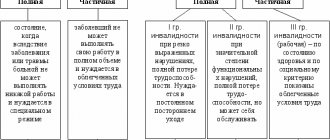Substitution at a maternity rate involves hiring a new employee for a temporary position in the event that a permanent employee becomes pregnant and goes on her allotted leave. But even accepting a newly arrived colleague does not exclude the possibility that she may also go on maternity leave.
In general, maternity leave is provided according to the Labor Code of the Russian Federation to working girls for the period burdened with pregnancy and future childbirth. The starting point for sick leave is the 30th week from the moment of pregnancy.
Its duration may vary under different circumstances:
- 140 days, if there are no complications in the girl’s situation;
- 156 – if additional difficulties arise;
- 194 – in severe cases, pregnancy with more than one fetus.
Additionally, an application is made to the employer to extend the vacation pay necessary to look after the child for one and a half to three years after childbirth.
All this time, the mother of the newborn is replaced by a temporary worker. The new mother is assigned a workplace. Therefore, the functions delegated to the new employee will be carried out only until the first employee leaves. In the future, if the mother refuses to go to her assigned place, it is possible to assign the employee under an open-ended contract as the main personnel.
What is maternity leave and maternity pay?
If a pregnant woman works, the employer is obliged to provide her with paid leave.
The first is 140 days in connection with pregnancy and childbirth. If the case is severe, it can last 194 days. The second is to care for a child until he reaches the age of three.
Before going on any of these vacations, write a statement. First, to provide sick leave for maternity leave at the 30th week of pregnancy. Then caring for a child up to one and a half or three years old.
A mother can go to work either after 140 days or three years after giving birth . And also at any time during maternity leave.
Many mothers start working when their child turns 1.5 years old. This is because after this time they are paid a rather small benefit.
The job of a woman on maternity leave is retained until the child is three years old. The employer cannot fire her according to law.
But there is a need to take another person in her place until the mother returns from maternity leave. Not only a new person, but also someone who has been working in the company for a long time can perform the duties of the main employee.
To do this, a person enters into an agreement with an organization, which states that he will work on maternity leave until the main employee returns from maternity leave.
Can they fire me?
A pregnant woman goes on maternity leave according to the general rules established at the legislative level. The expectant mother cannot be fired on the initiative of management. So, if a maternity leaver returns from vacation, then the woman working in her place vacates her position.
If a certificate confirming pregnancy is presented, the employer is obliged to offer another place. If the expectant mother is not satisfied with it, then she should formalize the refusal in writing.
If a woman working in a maternity position goes on maternity leave before the main employee leaves, then the day of her dismissal will be considered the first day she returns to work. The employment agreement is terminated automatically.
Watch the video about the intricacies of the issue:
Going on maternity leave from maternity pay
For women who work in the place of an employee on maternity leave, but plan to have their own children, it is important to figure out how to go from maternity leave to maternity leave. It is quite possible.
There is no law in the Russian Federation that would prohibit doing this. But in such a situation, its own nuances arise. In most cases, when applying for such a position, a fixed-term employment contract is concluded with the employee.
This document must indicate the end date of work activity. This is the day when a permanent employee must report to his workplace.
The information when it will be necessary to quit or move to another position is known in advance.
Since when applying for maternity leave and parental leave, an application is written, in it the pregnant employee clearly indicates the dates from which and on what date she will be absent.
When concluding a fixed-term employment contract, it is possible to extend it.
For example, if a permanent employee initially wrote an application for parental leave to care for a child up to 1.5 years old, and over time decided that she would not go to work until the baby was three years old, and wrote another application.
In this case, her start date shifts and it is much more convenient for management to renew the contract with an existing employee than to look for a new one.
There is another option when a permanent contract is concluded with a person who replaces an employee on maternity leave . This means that he will be hired for a permanent job in the event that a permanent employee changes his mind about going to work or quitting.
In accordance with the law, if a woman becomes pregnant while on maternity leave, the employee is obliged to comply with all the rules regarding payments and deadlines required by law.
This means that when an employee worked on maternity leave and decided to go on maternity leave, managers must provide her with the following:
- 140 days leave during normal pregnancy;
- leave of 156 days for childbirth with complications;
- leave of 194 days for multiple pregnancies.
This applies to maternity leave. Parental leave will be provided only if the permanent employee does not plan to go to work or quits.
Labor Code
At the legislative level, the rules for pregnant women taking leave are regulated by Art. 255, 256 labor legislation. These standards are also valid for employees planning to go on maternity leave at the maternity rate.
The duration of the vacation in any case is:
If a woman is carrying 1 baby and the pregnancy is not accompanied by complications - 140 days.- If the pregnancy is difficult, the duration of the leave increases to 146 days.
- If a woman has a multiple pregnancy, the leave increases to 194 days.
If there are no complications, the woman goes on vacation at 30 weeks. If there are difficulties or multiple pregnancies, the right to go on maternity leave appears at the 28th week.
These rules are valid both for women going on leave from their main place of work, and for expectant mothers working in a maternity position.
Possibility of dismissal during maternity leave
There is one more point that worries pregnant women - is it possible to fire a pregnant woman on maternity leave? This issue needs to be carefully examined.
If a woman gets a job as a deputy under a fixed-term contract, then certain difficulties may arise. The situation will have to be resolved together with the employer.
Since, in accordance with the Labor Code of the Russian Federation, an employer cannot fire a pregnant employee.
But Article 261 of the Labor Code of the Russian Federation provides for the possibility of dismissing a pregnant woman on maternity leave in the following cases:
- Upon liquidation of the company.
- Upon expiration of the contract during the pregnancy period. If a permanent employee is returning from maternity leave, priority is given to him. If there is a vacant position in the company that corresponds to the qualifications of a temporary employee, she can be transferred to this position with her consent in writing. Management must offer the pregnant deputy all available vacancies. After she gives birth, she is fired.
- At the end of maternity leave. To extend the term of a fixed-term contract until the moment of childbirth, management will need a written statement from the employee and a medical certificate, which confirms her pregnancy.
If an employee has perfectly integrated into the team and demonstrated her competence and performed her duties admirably, then management can not only offer her a transfer to a vacant position that corresponds to her qualifications, but also hire the employee after returning from maternity leave.
In a situation where the term of a fixed-term employment contract was extended due to the absence of a permanent employee from work, and the deputy is on maternity leave, then you can go on maternity leave.
Dismissal from maternity leave will occur when the contract term ends or the permanent employee begins to perform his duties.
There is no need to worry about being fired during maternity leave.
Since, in accordance with the legislation of the Russian Federation, it is impossible to dismiss an employee during illness if he has sick leave. Therefore, you can feel calm before giving birth.
If the contract ends during pregnancy
If the period of validity of a fixed-term employment contract ends during pregnancy, then in order to extend it the expectant mother will need to write an application addressed to the management. It must contain a request to extend the employment agreement until the baby is born. A certificate confirming the presence of pregnancy is attached to the document.
Further, the employer can, every 3 months, require an additional certificate from the expectant mother to confirm the fact of pregnancy. If there is no request, the woman is not obliged to provide it voluntarily.
Consequently, a pregnant employee on maternity leave is guaranteed by law practically the same rights and benefits as the main employee on maternity leave. Difficulties can arise only when making payments before the child reaches 3 years of age.
Top
Write your question in the form below
What payments are due?
Since a fixed-term employment contract at a maternity rate ends for a substitute at the moment the main employee returns, the company only bears certain responsibilities.
If an employee goes on maternity leave at maternity rate, he is required to pay only compensation for maternity leave.
Monthly payments for caring for a child up to one and a half years old will be made only until the end of the fixed-term employment contract. After this, they become the responsibility of social protection.
The amount of compensation directly depends on the average monthly earnings and average daily earnings.
To calculate these indicators, they take the last two years of work before maternity leave and wages for these periods.
If a person works less than this period on maternity leave, then you can bring a certificate from other places of work for this period. If these indicators are not available, the calculation will be based on the minimum wage.
At the same time, a woman will not receive less than the minimum amount of maternity pay . In addition, when a woman registers with a medical facility before 12 weeks, she will be paid a benefit.
As for payments after childbirth, if an employee was fired after the birth of a child, the employer is obliged to pay a lump sum payment, which is allocated to any woman after childbirth.
If it is possible to go on maternity leave at maternity rate, the employee will be paid 40% of her average monthly earnings every month.
But this will last only until a permanent employee comes to work or until the end of the contract. After this, payments will stop.
Required documents
After the employer has been informed about the condition of the new employee, it is worth starting to collect documents. It is important to collect the following documents:
- certificate of income from the newly created job;
- sick leave, which states the current physical condition;
- application for paid sick leave.
A sick leave must be obtained from a clinic at your place of residence or from any paid department of a medical institution. The sheet must be signed by a gynecologist. Documents with marks or markings will not be accepted at the place of work.
The next step is to visit the accounting department. There you need to take a certificate of current income. If an employee has worked for less than six months, then not her actual salary is indicated, but the minimum wage.
After which an application is drawn up and, together with the rest of the package of documents, is submitted for consideration to management. The decision is made within ten working days. The application must be completed in accordance with the following rules:
- official business style of documentation;
- a hat addressed to the head of the company or firm is required;
- indication of the reasons for going on maternity leave and mandatory documentary evidence;
- date and signature.
If the application is filled out incorrectly, the employer has the right to reject it. You can resubmit the paper after all necessary corrections have been taken into account.
Pros and cons of working on maternity leave
Temporary maternity leave is not suitable for every employee. But still, this type of employment has its advantages:
- Experience. This is especially true for young professionals who have recently graduated and are ready to work to gain experience and knowledge.
- High profit payment.
- The likelihood of further employment in the company on a permanent basis. If an employee proves himself well, management will most likely keep him or hire him after maternity leave.
- Providing vacation and compensation for unused rest days.
- In some cases, a temporary employee may be entitled to child support payments for up to three years.
Among the disadvantages are the following:
- Short-term, indefinite employment period. A permanent employee has the right to leave parental leave and begin his duties at work on any day.
- Interruption of work experience.
- Losing a job when going on maternity leave.
- Lack of child care payments.
The employer’s relations with employees who are hired on maternity leave in the civil service are regulated by the general provisions of the Labor Code on fixed-term employment contracts and the norms provided for by the law “On the State Civil Service of the Russian Federation.”
Thus, working on maternity leave has its disadvantages and advantages. If a woman becomes pregnant while on maternity leave, she can go on maternity leave; there is no law that would prohibit such an action.
In this case, the woman must be provided with sick leave for pregnancy and childbirth..
As for parental leave, it can only be obtained if a permanent employee has not returned to work and does not plan to return in the near future.
Similar articles:
- How to write an application for maternity leave?
- Do they have the right to lay off or fire a husband if his wife is on maternity leave?
- How to leave maternity leave early?
- What payments are due during maternity leave?
- Is it possible to work another job while on maternity leave?
- Previous post Extension of maternity leave to 3 years, to 4.5 years
- Next entry Can you be fired after maternity leave?
Comments on the article “How to go on maternity leave from maternity leave?”
Nobody has written anything yet. Be the first!
Is it worth taking a maternity position when planning a family?
Flaws:
- The contract period is limited. A guarantee of job security can be provided only until the time when the main employee returns from maternity leave;
- When going on maternity leave, there is a high probability of losing your job. The work experience is interrupted, it is necessary to look for new vacancies that may not be so attractive;
- Payments are provided for no more than 194 days. All that remains is to hope that they will last to care for the child.
The maternity rate is not about stability. Sick leave and payments in case of pregnancy will be provided, but they will not ensure the upbringing of the baby for the next 1.5 or 3 years. You can rely on yourself and luck, but the law will be on the side of the main worker.
Waiting for the stork
1 They will pay 2 They have no right to fire a pregnant woman. If her predecessor goes back to work, your friend is required to provide another workplace (it also depends on what kind of contract is concluded with her: if for a specific period, then there is another option (read below) Article 184 of the Code of Labor Protection for the Employment of Female Women and Women, which children are subject to age up to three years of age (up to six years of age - part of the State Statistics Service 179), single mothers in case of detection of a child aged up to fourteen years of age or a disabled child from the initiative of the official or the authority authorized by him not to have access There is, in addition to the emergence of new liquidation of business, installation, organization , if it is allowed to comply with obligatory treatment. Obligatory treatment for the appointment of wives also occurs in cases of their release after the completion of a fixed-term employment contract. During the period of treatment for them, The average salary is taken into account, and no more than three months from the day the fixed-term employment contract ends.
We recommend reading: How many Points do you need in Artek
A friend needs information: it so happened that she just got a job and a month later became pregnant. She was already taken on maternity leave. Her predecessor’s maternity leave ends in February 2021, but perhaps the girl will extend it up to six years. What is now possible for my friend personally: - will she be paid for sick leave for maternity leave (2 months before, 2 after) - can she go on maternity leave while already working on maternity leave or will she have to quit? — will she have the experience when she’s already on maternity leave herself?










